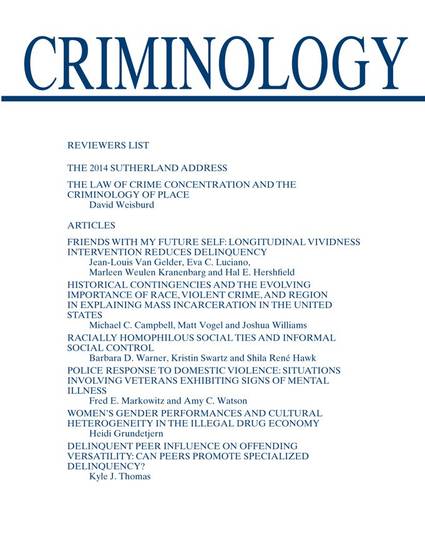
Article
Historical Contingencies and the Evolving Importance of Race, Violent Crime, and Region in Explaining Mass Incarceration in the United States
Criminology
(2015)
Abstract
This article combines insights from historical research and quantitative analyses that have attempted to explain changes in incarceration rates in the United States. We use state‐level decennial data from 1970 to 2010 (N = 250) to test whether recent theoretical models derived from historical research that emphasize the importance of specific historical periods in shaping the relative importance of certain social and political factors explain imprisonment. Also drawing on historical work, we examine how these key determinants differed in Sunbelt states, that is, the states stretching across the nation's South from the Atlantic coast to the Pacific, from the rest of the nation. Our findings suggest that the relative contributions of violent crime, minority composition, political ideology, and partisanship to imprisonment vary over time. We also extend our analysis beyond mass incarceration's rise to analyze how factors associated with prison expansion can explain its stabilization and contraction in the early twenty‐first century. Our findings suggest that most of the factors that best explained state incarceration rates in the prison boom era lost power once imprisonment stabilized and declined. We find considerable support for the importance of historical contingencies in shaping state‐level imprisonment trends, and our findings highlight the enduring importance of race in explaining incarceration.
Disciplines
Publication Date
January 5, 2015
DOI
10.1111/1745-9125.12065
Citation Information
Michael C. Campbell, Matt Vogel and Joshua Williams. "Historical Contingencies and the Evolving Importance of Race, Violent Crime, and Region in Explaining Mass Incarceration in the United States" Criminology Vol. 53 Iss. 2 (2015) p. 180 - 203 Available at: http://works.bepress.com/matthew-vogel/7/
